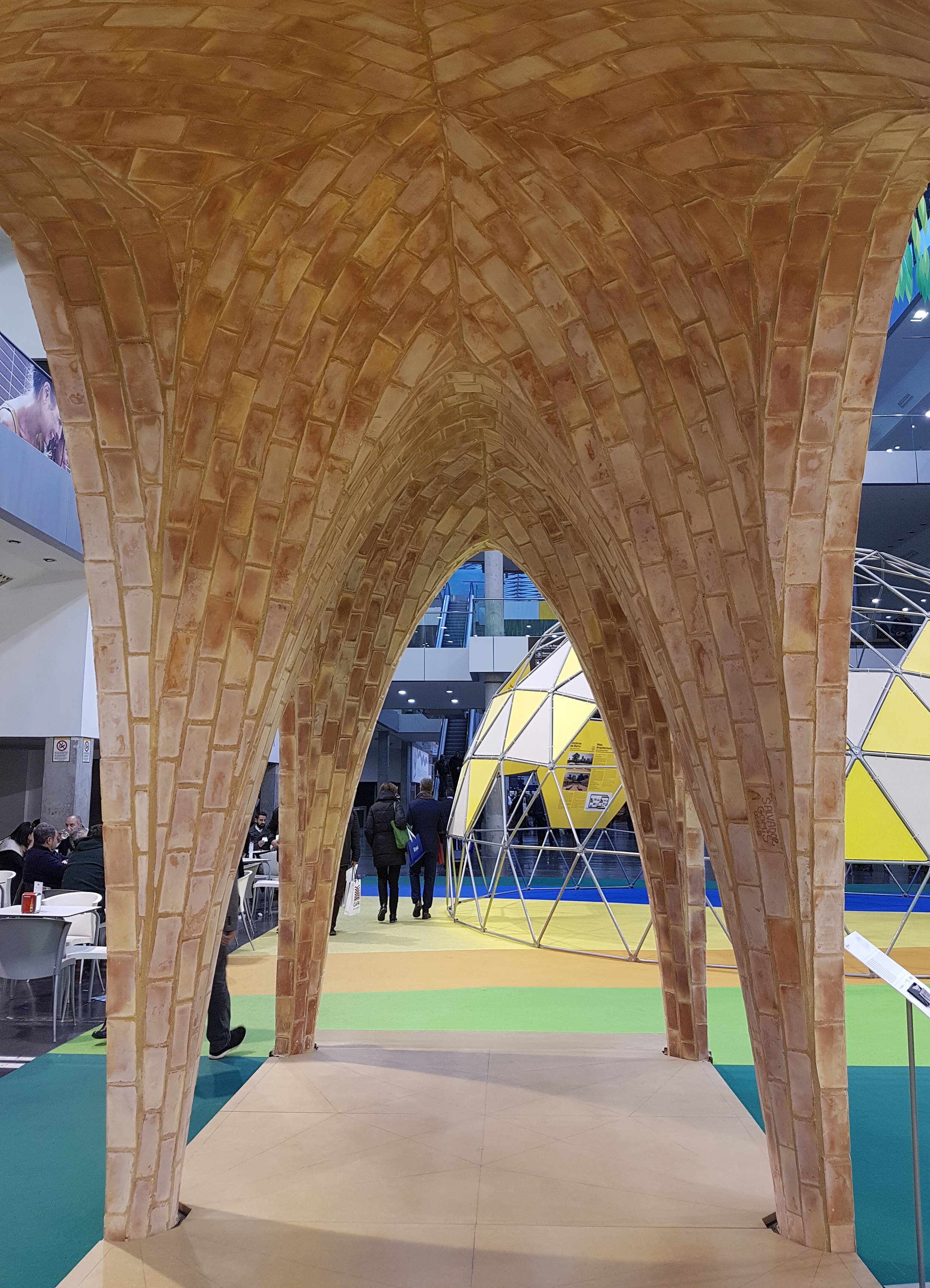FabricArte
Lead Architect M Wesam Al Asali Valencia 2018 (Wesam Al Asali and Salvador Gomis)
Collaboration: Light Earth Design
Fabricarte was exhibited in the exhibition of ACADIA 2018 / Recalibration: On Imprecision and Infidelity
Craft in construction is usually considered to be limited to decorative arts and regarded as time-consuming and labour intensive. But using thin-tile vaulting, a Mediterranean technique, an artisan converts terracotta tiles into structural elements that can be utilitarian or expressive. Craftsmanship in modern construction is one subject of Wesam Al Asali's research as a PhD student of architecture at the University of Cambridge. Light Earth Designs (LED) and Wesam Al Asali have been working on the interface between traditional craftsmanship and modern rapid construction in thin-tile vaulting. The design team worked on the project FabricArte: a three-vault pavilion in the central hallway of the Valencia Expo. The project is curated by the organisations Tile of Spain (ASCER) and the Instituto de Tecnología Cerámica (ITC), both working each year with artists, architects, and researchers on projects that aim to push the boundaries of the use of ceramic as a material and an architectural element.
Due to Expo regulations, the time frame to build on-site is very narrow. The designers developed a way to build the vaults in a workshop and then slice and transfer them to the site to be reassembled. The geometrical configuration with which the three vaults were sliced is inspired by gothic vaulting, commonly seen in the historic buildings of Valencia. In rib and rib-less gothic vaults, modular units mirror, repeat, and array to compose the main structure—a concept that inspired the design to optimise labour and time. As a result, the vault manufacturing was systemised for a rapid in-situ construction, but it also avoided using heavy machinery, and the process remained handmade.
The architecture of the pavilion shows two systems of structures, a tension and a compression one, interacting and integrating in three modules. The transition from a full-height to a flat vault experiments with spatial and structural properties of geometries and demonstrates different uses of unreinforced ceramic for both expressive stand-alone structure and flat slab system that can be used in housing construction. While the added bottom layer of tiles hid the patterns of cuts, the flooring of the pavilion reflects the lines as a diagram of the process of manufacturing to the viewer.
The technique (Bóveda tabicada) is rooted in Valencia. The oldest document mentioning this craft is a letter in 1382 by King Peter IV of Aragon describing builders in Valencia using a rapid and efficient vaulting technique. A tradition of vault and stair-making continues thanks to workers and masters who kept it alive. LED worked with one of those builders, Salvador Gomis Aviño, and his team, who, in addition to restoration projects, work on contemporary thin-tile vaulting projects .
While vaults in prefabrication is not a new subject, this experiment proposes a modus operandi that is entirely craftsmanship-driven. Manufacturing of building component is usually imagined accompanied with heavy machinery, cranes, and highly advanced tools. Fabricarte challenges this image, by constraining all manufacturing phases to the hand, and pushes it towards a more inclusive approach in the construction industry





















